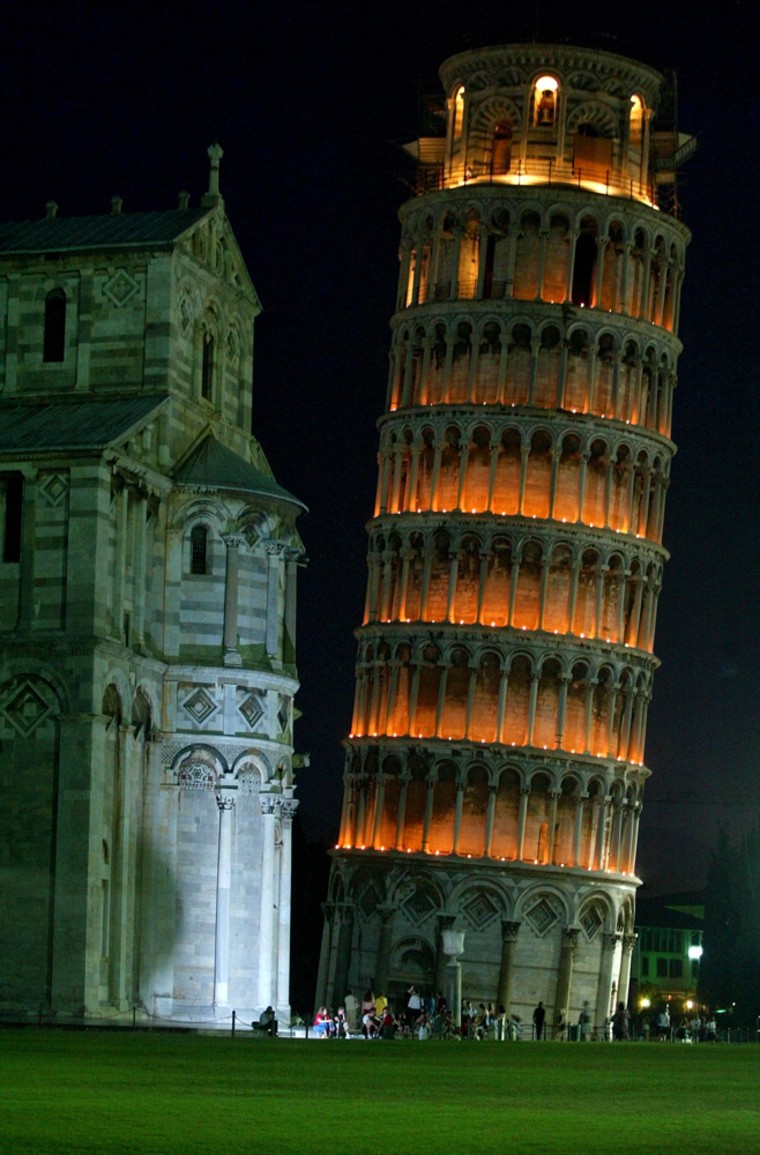The leaning tower of Pisa has been successfully stabilized and is out of danger for at least 300 years, said an engineer who has been monitoring the iconic Italian tourist attraction.
"All of our expectations have been confirmed," Professor Michele Jamiolkowski, an engineer and geologist, was quoted as telling Italy's leading newspaper, Corriere della Sera.
The tower's tilt of about four meters off the vertical has remained stable in recent years, after a big engineering project that ended in 2001 corrected its lean by about 1 1/2 feet (40 centimeters) from where it was in 1990 when the project began.
"Now we can say that the tower can rest easy for at least 300 years," Jamiolkowski told the paper in an article published on Wednesday.
The tower was shut to visitors for almost 12 years from 1990 — when it was sinking less than an inch (about a millimeter) a year — and reopened in December, 2001 at the end of the biggest phase of the consolidation and restoration project.
The 15,432-ton free-standing bell tower, an internationally recognized architectural symbol of Italy along with Rome's Colosseum, was built in several stages between 1174 and 1370.
Anchored to cables
It began to tilt after completion of several stories due to unstable ground. Builders at first used trapezoidal stones to return the structure to the vertical but the tower continued to lean.
During the stabilization phase of the project which ended in 2001 the structure was anchored to cables while cement was injected to relieve pressure on the ground. The lean of the tower is now considered safe and is about what it was in 1700.
Restorers are now using a specially-designed, light-weight scaffolding made of an aluminum alloy as a base from which to clean the tower's white and grey marble.
Officials have said over the years that they have no intention of straightening the tower, which would detract from its unique status and tourist draw.
Astronomer Galileo, who was hauled before the Vatican's Inquisition for his view that the Earth revolved around the sun, is said to have used the tower of his hometown for experiments on gravity.
